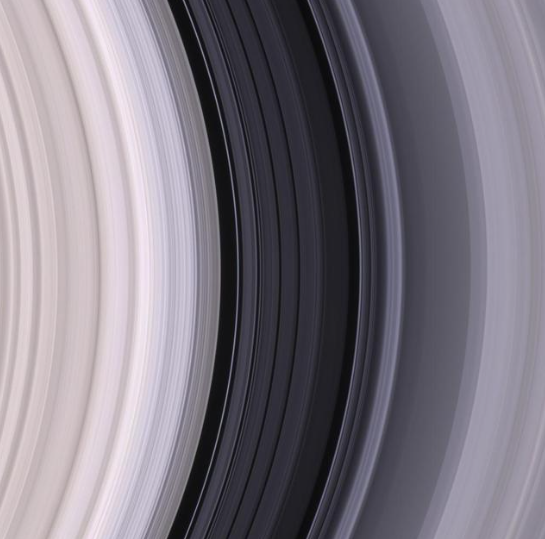Is this the close-up of vinyl, or is it just Saturn's rings?
NASA just released a stunningly crisp image of Saturn's rings on their Instagram page last Tuesday, June 15. The image was captured by the space agency's Cassini spacecraft by employing red, green, and blue spectral filters to simulate what a human would view in orbit around Saturn.

The Cassini spacecraft captured this image using red, green, and blue spectral filters to simulate what a human would view in orbit around Saturn. NASA, the European Space Agency, and the Italian Space Agency collaborated on the Cassini-Huygens project to explore Saturn and its moons.
Fun Facts About Saturn's Rings

Saturn's Rings Are Icy
Although it is not the only planet with rings within the solar system, Saturn's rings are very special because they are the most visible and intricate, consisting of billions of microscopic bits of dust, rock, and of course, ice!
Bits of the Rings Vary in Sizes
According to NASA, several of these bits are as minuscule as sand grains, but some are significantly larger than towering structures, and others are more than a kilometer or half-mile across. Talk about a diversity of sizes!
The rings are massive but also thin. The major rings may almost reach the moon from Earth. Despite this, they are only a kilometer thick.
The Rings Are Alphabetized Based on their Year of Discoveries
The rings are alphabetized by the year they were discovered.
The rings have only achieved G so far, but proceeding outwards from the planet, the letters are D, C, B, A, F, G, and E.
With the exception of B and A, which are 2,920 miles (4,700 km) apart, the majority of these are quite near together. This is due to a phenomenon called the Cassini Division, according to The Fact Site.
Galileo Thought That the Rings Were Like Ears
When Galileo first spotted Saturn's rings in 1610, he believed they looked rather like ears or grips than rings.
The actual discovery of Saturn took nearly 50 years when Christiaan Huygens observed in 1656 that the planet's ears were not arm-like but instead, it surrounded the globe in a thin ring.
We understood more about the gaseous planet over time, including the fact that the "thin ring" suggested was actually a series of rings.
Mysterious Spokes in Saturn's Rings
As if Saturn's rings couldn't be mysterious enough, astronomers uncovered a phenomenon called "Spokes." These Spokes are peculiar marks that emerge over the rings in seconds and dissipate within a few hours. The Voyager Spacecraft was the first to notice them, and Voyager 2 followed suit in 1981.
When sunlight strikes the rings, the patterns are prevented from appearing, a characteristic that perplexed the Cassini spacecraft in 2004 as they imaged the rings in the sun.
This article is owned by Tech Times
Written by Joaquin Victor Tacla
![Apple Watch Series 10 [GPS 42mm]](https://d.techtimes.com/en/full/453899/apple-watch-series-10-gps-42mm.jpg?w=184&h=103&f=9fb3c2ea2db928c663d1d2eadbcb3e52)



